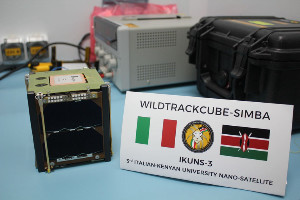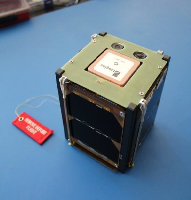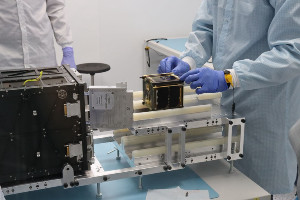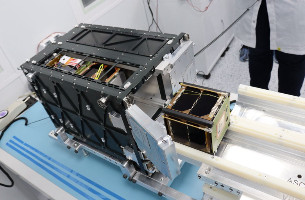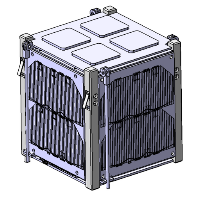| Satellite | WildTrackCube – SIMBA (SIMBA, System for Improving Monitoring the Behaviour of Animals, IKUNS 3) |
|---|---|
| Form factor | CubeSat |
| Units or mass | 1U |
| Status | Reentry 2024-08-14. Was operational? (IAC 2022 paper and many SatNOGS reports last checked on 2021-03-27) |
| Launched | 2021-03-22 |
| NORAD ID | 47941 |
| Deployer | 12U Deployer [Aerospace Capital] |
| Launcher | Sojuz |
| Organisation | Sapienza University of Rome |
| Institution | University |
| Entity type | Academic / Education |
| Country | Italy |
| Launch brokerer | GK Launch Services |
| Partners | University of Nairobi, Machakos University, The Sapienza Space Systems and Space Surveillance Laboratory (S5Lab) |
| Oneliner |
System for Improving monitoring the behaviour of animals and amateur radio mission. |
| Description |
System for Improving Monitoring the Behaviour of Animals. The main payloads and missions are:
The cameras are 5MP module that will shoot periodic pictures of the Earth and will downlink them during ground station passages in clear. The images are alike those of 1KUNS-PF, but higher resolution and with a tighter field of view (25deg) - with the objective of gathering more details of the surface. The radio-amateur community is free and welcomed in downloading the images as was with 1KUNS-PF. The telemetry as well will be downlinked periodically with public formats and will provide a clear picture of the behavior of the hardware in the space environment. At the same time, WildTrackCube-SIMBA aims at demonstrating a spaceborne method for improving the monitoring of the wildlife behavior in the Kenyan National Parks. The satellite is equipping innovative spread-spectrum modulation receiving equipment in order to receive data from radio tags installed on various wildlife species (ideally from birds to large mammals) in the National Parks of Kenya. The system is addressed at acquiring both positioning (Global Positioning System, GPS) and health data from the animals. The data is transmitted in clear form with public formats. The educational return of the mission for the students involve will focus on ground-to-satellite low-power data links, on the development and management of a radio-tag system able to uplink data to a satellite, to the manufacturing and operations of a University class nano-satellite. The "Store and Forward" system is the same that will be used in the GreenCube mission, which will fly at a higher altitude (6000km). Radio-amateurs can use this system to send and receive packets during the visibility time of the spacecraft, as well as delaying packets to send them at a later time on another location along the orbit. This telecommand system can be also used by radio-amateurs to request by radio command that one of the cameras take a picture and downlink it immediately over their location. A user could send a packet which is a request for the onboard camera to take a photo over their QTH. The photo could be downlinked and decoded much like the NOAA weather satellites are, through a distributed ground station network like SATNOGS. |
| Results |
The telemetry on WildTrackCube-SIMBA is gathered every 60 seconds continuously. |
| Notes |
Won free launch from GK Launch Services. |
| Sources | [1] [2] [3] [4] [5] [6] |
| Photo sources | [1] |
| Space photos |  
|
Last modified: 2024-09-29
